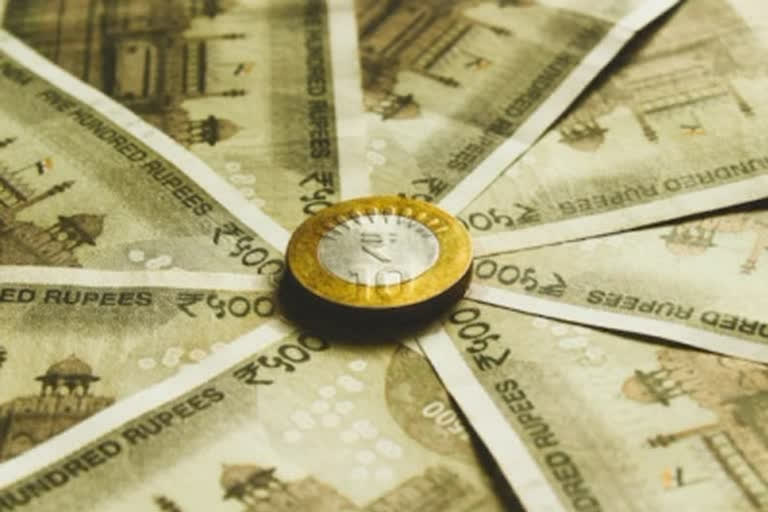New Delhi: A slowing economy which brought down the GDP growth in the third quarter to below 5 percent has cast a shadow on the authorities’ confidence that the country would still be able to achieve a high growth rate of 7 percent in the current financial year, one of the fastest economic growth rates among the emerging and major economies.
In its second advanced estimate, India’s apex statistics body for measuring the economic activity, the National Statistical Office (NSO), has maintained that the GDP growth in the current financial year (April 2022-March 2023), would be 7 percent. But several high frequency economic indicators reveal that this may be an optimistic assessment.
There are several reasons for this - the pent-up demand which had provided thrust to the growth has been normalized for last several months. Secondly, exports which had been doing well and helped the country exceed the last year’s target of an export of $400 billion have been facing strong headwinds this year due to slowdown in the global economic activity.
Moreover, major economies such as the USA, one of India’s largest trading partner, is staring at a strong possibility of entering into recession later this year as the US Federal Reserve has been consistently tightening the money supply by increasing the rates as it fights a four-decade high consumer inflation as food and fuel prices are experiencing double digit or near double digit increases.
In India, the Reserve Bank has also followed a coordinated path of policy rate hikes since May last year as the retail inflation has been hovering above the RBI’s legally mandated upper band of 6%. Under the Section 45ZA of the RBI Act of 1934, the RBI is under obligation to keep the consumer inflation within the target set by the Union Government which is 4 percent with a margin of 2 per cent on either side.
The Reserve Bank’s war on inflation has squeezed money supply and it has made the borrowing of money by businesses and individuals costlier, impacting the consumption and purchase behaviour.
Though the National Statistical Office (NSO) has predicted annual GDP growth this year to be 7 per cent, the base effects after the outbreak of Covid-19 global pandemic have made it difficult to compare year-on-year growth.
According to economists, a better way would be to analyze the current growth numbers with the pre-pandemic level to assess the economic activity in the country. For example, the combined annual growth rate (CAGR) has been assessed at 3.7 per cent during the third quarter of FY 2019-2020 and third quarter of FY 2022-23. It is much lower than the CAGR registered during which was 5.4% during third quarter of FY 2016-17 and the third quarter of FY 2019-20, a drop of 170 basis points or 1.7 percent.
Weak industrial recovery
Similarly, the sector wise economic growth or recovery varies considerably. For example, the combined annual growth of industry has been assessed at 4.4 percent during the third quarter of FY 2019-20 to the third quarter of 2020-23, much better than the pre-pandemic level when it was 3.2 percent during the third quarter of FY 2016-17 and the third quarter of FY 2019-20, before the pandemic hit the world.
It is namely due to a better recovery in almost all the sub-sectors of the industry but it is still well below the growth level that is required to take the GDP growth to 7%-8% as predicted by the NSO.
Services sector yet to recover
The services sector which accounts for half of the India’s economy and was the fastest growing sector, has been hit hard by the Covid-19 pandemic and it is yet to recover from the economic shock induced by the Covid-19.
For example, during the three years of Covid, the combined annual growth rate of 4.0% during the third quarter of FY 2019-20 and the third quarter of FY 2022-23, which is 260 basis points (2.6%) below the combined annual growth rate during the CAGR registered during the third quarter of FY 2016-17 to the third quarter of 2019-20.
Moreover, the growth in the employment-intensive sectors such as trade, hotels, transport was below 3 per cent during the pandemic years as against the growth of over 8 per cent during the three pre-Covid years.
Heat-waves could hit farming sector, rural economy
In addition to services sector and industry, the agriculture sector which gives livelihood to majority of Indians is expected to face a difficult period this year due to heatwave conditions in the country.
Some parts of the country have already witnessed unusually warm temperature last month which would not only adversely affect the wheat production in the country but also jack up the food inflation. India’s meteorological department has already predicted possibility of severe heatwaves during March and May this year but it could also affect the output of farming sector.
Though the NSO has assessed the agricultural growth at 4.3% in the third quarter of the current financial year but heatwave conditions may affect the output in the fourth quarter and the first quarter of the next financial year. It will not only affect food production that would keep the food prices high but it could also hit the rural demand which has been under pressure since the outbreak of Covid-19.



